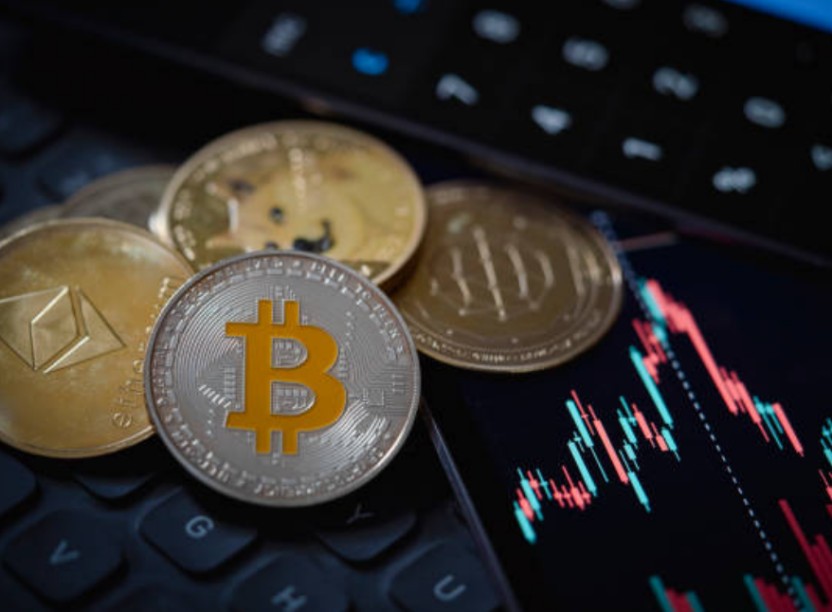Ever checked the Ethereum price today? Ever felt that stomach do a backflip at the number? It’s like watching a rollercoaster in real time but with invisible tracks and loops every few hours. Right now, you would find Ethereum on trade at around $3,925.56 USD yet just yesterday it had dipped from $3,829.65 to $4,079.65. That is the kind of drama associated with crypto trading that makes it both thrilling and nerve-wracking. If you are a person mesmerized by numbers jumping up and down like a caffeinated frog, welcome. Let us discuss why does ethereum price decorates such swings and how can you surf the waves instead of wiping out.
Fluctuations in Ethereum Prices
The Ethereum price is not a shift but a dance. On any given day, network updates, NFT buzz, or just a tweet from Elon Musk can jerk the markets up or down. That 2.74% slide over 24 hours shows just how jumpy ETH is based on global sentiment. Unlike more stable assets, news, rumors, and speculation register immediately on the price of Ethereum. Traders often call it liquid fire–volatile but full of opportunity. When you look at the ethereum price chart, it’s not just a number, it’s a reading on the market’s mood, trends, and sometimes even mayhem.
Market sentiment plays a huge role in the movement of the cryptocurrency. Positive developments like this might raise Ethereum’s value within hours, such as the adoption of Layer 2 or a big corporate partnership with major news having an impact one way or another. It can be said that regulatory crackdowns or network congestion can cause it to dive. Gas fee reductions and smart contract vulnerabilities are perceived as tech developments affecting short-term swings. Such triggers, rather than obsessively poring over charts in panic, make some sense out of what the Ethereum price is up to.
Timing Your Actions
Timing is crucial in the chase of the ethereum price. Some day traders thrive on their short-term swings. They can buy low and sell high within the course of a few hours. There are those excited by these strategies and who purse a ‘HODL’ growth, ignoring the day-to-day dips in their investments. All are useful strategies, but the secret is to use a strategy that suits your tolerance to risk. A low of $3,829.65 over 24 hours and$ 4,079.65 twenty four hours later provides some intraday possibilities although lean with the prevailing wind could be extremely risky. Unfortunately, this leads to losses that are not representative of you as they often do with neophytes. A cool head coupled with stop-loss orders is a way of dodging knee-jerk reactions regularly seen by neophytes.
Technical indicators like moving averages, RSI, and MACD are your best friends in predicting which way the ethereum price trend is headed. As, they don’t give you a crystal ball, rather indicate when the market is overbought or oversold. Such real-time monitoring of news combined with such analytical tools will help you catch any such opportunity that others might just let slip through their fingers. For example, an increase in trading volume by, say, a factor of five over its average accompanied by a slight dip could indicate a coming rebound – an opportunity to buy low before the price rebounds.
Clever Trading Tactics
Effective ethereum price trading is much more than intuitive, it is strategic. Of the many ‘strategies’, one of the most popular is ‘swing’ trading – attempting to capture short to medium term waves ‘riding’ over days or weeks rather than ‘daytrading’. Swing traders study patterns, trends and support/resistance levels in an attempt to mine the market for income while balancing risk. Conversely, scalping is for action junkies, making dozens of trades to snipe tiny price movements throughout a single day. Every method undoubtedly has its advantages and disadvantages, both require attention and discipline.
“Diversification” is one such strategy. Ethereum is cool, but it should never be your entire portfolio. Having investments spread out among different assets (stablecoins, BTC or DeFi tokens), instead of putting all resources in one basket, hedges you against sudden and severe drops in the price of ethereum. Some traders even hedge with options or futures contracts. If for instance you have some ETH holdings yet feel that its price may dip in the near future, you can freeze a sell price through a futures contract. This way your capital is insulated while still getting you back into the game with potential gains in the long run.
Understanding Market Trends
Reading the movements of ethereum prices require psychology as much as it does charts. It’s the fear and greed that dictate trading. When everyone panics over a 3 percent dip, prices tend to rebound as those contrarian traders step in. When optimism spikes, it can lead to overvaluation and thus a correction. Keeping a log of market reactions and how you emotionally responded to them will help develop better trading habits. Eventually, you will start tracing patterns in how the ethereum price reacts to certain triggers, giving you an edge over the rest of the more impulsive traders.
Flames on social media as another pulse point. Specifically, there’s a hint of what forums, Twitter, and crypto communities might be saying regarding upcoming moves for Ethereum. Now, to be very clear, we would never ever make rumors take the wheel on our trading decisions but having an eye out for what sorts of narratives are trending can help you make a more informed move. Especially, if a major NFT platform declares integration with Ethereum, just from the announcement alone it may get a favorable reception in the market even before any proper news release goes out. The monitoring of these signals helps smart traders forecast rather than follow the trend vaguely on the price movements of Ethereum.
No strategy would be whole without risk management. It’s ambiguous at what price Ethereum will trade next and guaranteed losses may be incurred without the safeguard. Stop-loss orders, position sizing, and diversification ought to be reduced to exposure. The worst time to be adding to your position is during a panic. A sudden 5% loss might feel cataclysmic, but really, with proper risk management, it’s just another blip on your trading radar.
Leverage is an enticing but risky move. Some platforms like Bitget allow traders to leverage their positions, hence profits but along with amplified profits come amplified losses. How leverage affects the position in ether well needs to be understood well before taking any such leap. Good traders use very little leverage with very tight stop-losses, thus reducing the chance of being blown out by sharp swings.
Looking ahead, we could reasonably expect the ethereum price to continue to grow, with certainly some bumps along the way. For this forecast, analysts see prices rising to $6,181 by 2026 and possibly $7,513 by 2030. These predictions are based on the assumption of steady adoption, continued network improvement, and favorable market conditions. Short-term, of course, there’s bound to be volatility, though the long-term trend seems to ‘get’ what value proposition Ethereum is trying to represent – that of a leading smart contract platform. For traders, this is both a reassurance as well as a small nudge reminding them to be strategic.
Keeping a close eye on Ethereum’s ecosystem—including things like Layer 2 solutions, dApp expansion, and gas fee improvements—can help provide traders with an insight into potential price catalysts. This has to do more with educated assumptions than just speculating and helps one anticipate ethereum price swings with more confidence. The more information you have, the less random wagering you do and the more trading you do scholastically.
Conclusion
The price of Ethereum is savage, unpredictable, and extremely interesting. Its moves test even the most hardened traders ‘ nerves, as well as plans and patience — but also provide great gifts to those who bear examination, plan, and execute. Wrongly interpreting market signals, poor timing of trades, inappropriate strategies, misreading the market trend, or mismanagement of risk can turn Ethereum’s volatility into a graveyard for you rather than a playground for profit. Every rise and fall has some story hidden behind it, and the more you understand these stories your trading decision making will improve. Being interested, disciplined, and flexible is the only secret to riding the rollercoaster of Ethereum.


